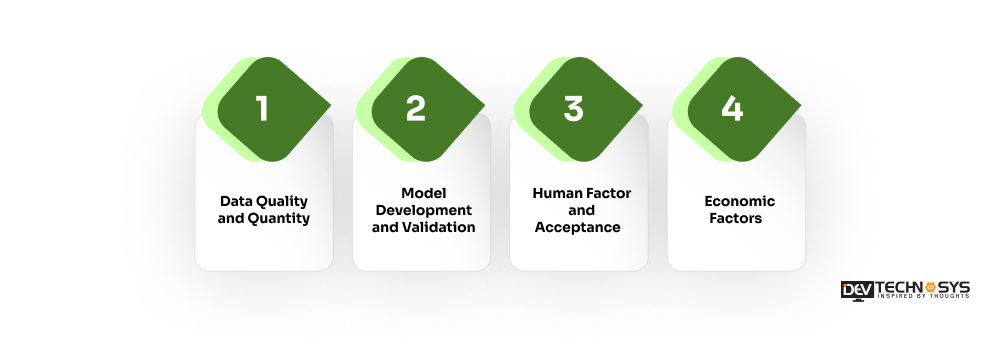The renewable energy sector is undergoing a transformative shift, powered by the rapid advancements in Artificial Intelligence (AI). From optimizing energy production to enhancing grid stability, AI-driven software solutions are revolutionizing the way we harness clean energy.
This article delves into the top software solutions of AI in Renewable Energy that are emerging in 2024 that leverage AI to address critical challenges and drive efficiency within the renewable energy industry. By exploring these innovative applications, we aim to showcase the potential of AI in accelerating the transition to a sustainable future.
Key Areas of focus will Include:
- Predictive Maintenance: How AI is extending the lifespan of renewable energy assets.
- Renewable Energy Forecasting: Improving the accuracy of energy production predictions.
- Energy Storage Optimization: Maximizing the value of energy storage systems.
- Smart Grid Management: Enhancing grid reliability and efficiency through AI.
- Solar Energy Optimization: Boosting solar panel performance with AI-driven insights.
- Automated Energy Trading: Leveraging AI for profitable energy market participation.
- Smart Meters and Energy Consumption Analysis: Empowering consumers with data-driven insights.
Why Choose Artificial Intelligence for Renewable Energy Development?
Artificial Intelligence (AI) is rapidly emerging as a cornerstone in developing and optimising renewable energy systems. Its ability to process vast amounts of data, identify patterns, and make predictions offers unparalleled advantages in addressing the challenges inherent to clean energy sources.

Predictability and Optimization: AI in Renewable energy sources, such as solar and wind, are inherently variable. AI excels at forecasting weather patterns, solar irradiance, and wind speeds, enabling more accurate predictions of energy generation. This information is crucial for grid operators to balance supply and demand, ensuring system stability. Furthermore, AI can optimize the performance of renewable energy assets by analyzing real-time data and making adjustments to maximize energy output.
Efficiency and Cost Reduction: AI-driven predictive maintenance can significantly extend the lifespan of renewable energy infrastructure by detecting potential issues before they escalate into costly breakdowns. This reduces maintenance costs and minimizes downtime, ensuring consistent energy production. Additionally, AI can optimize energy storage systems, maximizing their efficiency and reducing reliance on the grid.
Grid Integration and Stability: Integrating large amounts of intermittent renewable energy into the grid presents challenges. AI can help manage these challenges by providing real-time insights into grid conditions, enabling grid operators to make informed decisions about energy dispatch and storage. By optimizing energy flow and balancing supply and demand, AI contributes to a more stable and reliable grid.
Accelerated Innovation: AI catalyses innovation in the renewable energy sector. By analyzing vast datasets, AI can uncover new patterns and correlations that lead to breakthroughs in technology and process improvement. Machine learning algorithms can be used to develop advanced materials for solar cells or to optimize the design of wind turbines.
Environmental Impact: The deployment of AI in renewable energy can contribute to a more sustainable future. By optimizing energy production and reducing waste, AI helps to minimize the environmental footprint of the energy sector. Furthermore, AI can be used to develop innovative solutions for energy storage and distribution, promoting a cleaner and more efficient energy system.
AI is a powerful tool that can accelerate the transition to a renewable energy future. By addressing key challenges such as variability, efficiency, and grid integration, AI is helping to unlock the full potential of clean energy sources. As technology continues to advance, the role of AI in the renewable energy sector is poised to become even more significant. These Renewable Energy App Development Solutions are very beneficial for the green energy generating industries.
How to Develop Renewable Energy through Artificial Intelligence?
Artificial Intelligence (AI) is a powerful tool that can significantly accelerate the development and optimization of renewable energy systems. Here’s a breakdown of key strategies:

1. Data Collection and Preparation
- Install Sensors: Equip renewable energy assets (solar panels, wind turbines, etc.) with sensors to collect data on performance, weather conditions, and environmental factors.
- Data Cleaning: Ensure data accuracy and consistency by cleaning and preprocessing collected data.
- Data Storage: Establish robust data storage infrastructure to accommodate large volumes of data.
2. Predictive Modeling
- Weather Forecasting: Develop AI in Renewable Energy with sophisticated models to predict weather patterns accurately, enabling optimal energy production planning.
- Energy Output Forecasting: Predict energy generation from renewable sources, helping grid operators manage supply and demand.
- Maintenance Prediction: Use AI to predict equipment failures, allowing for proactive maintenance and reducing downtime.
3. Optimization
- Energy Yield Optimization: Optimize the performance of renewable energy systems by adjusting parameters based on real-time data and predictions.
- Energy Storage Management: Optimize the charging and discharging of energy storage systems to maximize efficiency and grid stability.
- Grid Integration: Use AI to balance the intermittent nature of renewable energy with grid demands.
4. Machine Learning
- Pattern Recognition: Identify patterns in energy consumption and production data to optimize system performance. By using AI and Machine Learning for renewable energy asset management software you can build a cutting-edge platform for the energy industry to protect the environment.
- Anomaly Detection: Detects unusual patterns that might indicate equipment malfunctions or external factors affecting energy generation.
- Model Improvement: Continuously improve AI models through machine learning to enhance accuracy and efficiency.
5. Smart Grid Integration
- Demand Response: Use AI to optimize energy consumption by managing demand-side resources. Preparing and developing a model to use Artificial Intelligence in Renewable Energy Software Development needs a lot of investment and effort to get the real task done efficiently.
- Grid Stability: Contribute to grid stability by providing real-time data on renewable energy generation and forecasting.
- Distributed Energy Resources: Integrate distributed energy resources (DERs) into the grid efficiently using AI.
6. Research and Development
- Material Science: Use AI to accelerate the development of new materials for solar cells and energy storage devices. A renewable energy software development company could provide you with the best research documents for the development of AI in green energy.
- System Design: Optimize the design of renewable energy systems through AI-driven simulations.
- AI Algorithm Development: Develop specialized AI algorithms for renewable energy applications.
7. Collaboration and Partnerships
- Industry Collaboration: Partner with renewable energy companies, research institutions, and technology providers.
- Data Sharing: Foster data-sharing initiatives to improve AI model performance.
- Policy Support: Advocate for supportive policies and regulations to promote AI adoption in the renewable energy sector.
8. Examples of AI Applications
- Predictive Maintenance: Predicting when equipment will fail to minimize downtime and maintenance costs.
- Energy Trading: Optimizing energy trading strategies based on real-time market data and forecasts.
- Solar Panel Optimization: Adjusting solar panel tilt and orientation to maximize energy production.
- Wind Farm Optimization: Optimizing wind turbine placement and operation to increase energy yield.
By effectively combining these strategies, it’s possible to harness the power of AI to drive significant advancements in renewable energy development and contribute to a sustainable future.
What are the Benefits of Using Artificial Intelligence in Renewable Energy?
Artificial Intelligence (AI) is revolutionizing the renewable energy sector, offering a myriad of benefits.

1. Enhanced Prediction and Optimization:
- Accurate Forecasting: Using AI in Renewable Energy would be helpful to analyze vast amounts of data to predict weather patterns, solar irradiance, and wind speeds with unprecedented accuracy. This enables better planning and management of renewable energy generation.
- Performance Optimization: AI can optimize the performance of renewable energy systems by analyzing real-time data and adjusting parameters accordingly. For instance, it can optimize the tilt of solar panels or the orientation of wind turbines. Using AI for trending app & web solutions you can enhance the performance of your renewable energy platform.
2. Improved Grid Integration:
- Grid Stability: AI can help integrate variable renewable energy sources into the grid by predicting fluctuations and balancing supply and demand.
- Demand Response: By analyzing energy consumption patterns, AI can optimize energy distribution, reducing peak loads and improving grid efficiency.
- Anomaly Detection: AI can identify anomalies in grid behaviour, enabling timely interventions to prevent blackouts or brownouts. You can build models for using AI in Renewable Energy app development to furnish the needs of the energy sector.
3. Cost Reduction and Efficiency:
- Predictive Maintenance: AI can predict equipment failures, allowing for scheduled maintenance and reducing downtime, thereby lowering operational costs.
- Asset Management: AI can optimize the lifespan of renewable energy assets by monitoring their performance and identifying potential issues.
- Energy Storage Optimization: AI can optimize the charging and discharging of energy storage systems, maximizing their efficiency and reducing costs.
4. Accelerated Innovation:
- Material Discovery: Usage of AI in Renewable Energy can accelerate the development of new materials for solar cells, batteries, and other components, leading to improved efficiency and reduced costs.
- Design Optimization: AI can optimize the design of renewable energy systems, from wind turbines to solar farms, resulting in higher energy output and lower costs.
- Data-Driven Insights: AI can uncover hidden patterns and correlations in vast datasets, leading to innovations and breakthroughs in renewable energy technology.
5. Environmental Benefits:
- Sustainability: By optimizing the performance of renewable energy systems and reducing waste, AI contributes to a more sustainable energy future.
- Climate Change Mitigation: The increased adoption of renewable energy powered by AI can help reduce greenhouse gas emissions and mitigate climate change.
In conclusion, AI is a powerful tool that can significantly enhance the efficiency, reliability, and sustainability of renewable energy systems. By addressing challenges such as intermittency, grid integration, and cost, AI is playing a crucial role in accelerating the transition to a clean energy future.
What are the Challenges to Implementing Artificial Intelligence in the Renewable Energy Sector?
While AI offers immense potential for the renewable energy sector, its implementation is not without its challenges.

Data Quality and Quantity
- Data Scarcity: In many regions, historical data on renewable energy generation is limited, hindering the development of accurate AI models.
- Data Quality Issues: Inconsistent data formats, missing values, and measurement errors can significantly impact the reliability of AI models. For improving the data quality you can contact full-stack development services providers to get the job done easily.
- Data Privacy: Handling vast amounts of sensitive energy data requires robust security measures to protect user privacy and prevent data breaches.
Model Development and Validation
- Complexity of Renewable Energy Systems: Renewable energy systems are complex, with multiple interacting variables, making it challenging to develop accurate and generalizable AI models.
- Model Interpretability: Many AI models, especially deep learning models, are considered black boxes, making it difficult to understand how they reach their conclusions.
- Model Validation: Ensuring the reliability and accuracy of AI models in real-world conditions requires rigorous testing and validation. Integration of Artificial Intelligence in Renewable Energy apps has faced difficult challenges for the past few years.
Infrastructure and Integration
- Legacy Systems: Integrating AI in Renewable Energy with existing legacy infrastructure can be complex and time-consuming.
- Computational Resources: Developing and running AI models requires significant computational power, which can be expensive.
- Cybersecurity: Protecting AI systems from cyberattacks is crucial to maintaining the integrity of renewable energy operations.
Human Factor and Acceptance
- Skill Gap: A shortage of skilled AI professionals in the renewable energy sector can hinder adoption. Using AI in app development for Renewable Energy is the best move for most businesses to provide a green environment to the world.
- Resistance to Change: Overcoming resistance to new technologies and processes can be challenging. To Hire Renewable Energy Software Developers you need to invest more money as expected because of the complexity of the industry.
- Ethical Considerations: Implementing AI ethically, ensuring fairness and avoiding bias, is essential for public acceptance.
Economic Factors
- High Initial Costs: Developing and deploying AI solutions can involve substantial upfront investments. Generative AI Renewable Energy software is being developed to curb the atrocities of energy management.
- Return on Investment: Demonstrating a clear return on investment for AI projects can be challenging, especially in the early stages.
Addressing these challenges requires a combination of technological advancements, policy support, and industry collaboration. By overcoming these hurdles, the renewable energy sector can fully harness the potential of AI to build a sustainable future.
Cost to Integrate AI in the Renewable Energy Sector
Developing a fully integrated platform for AI in the Renewable Energy sector, capable of handling the vast amounts of data and complex computations required for optimal system performance, presents substantial financial and technological hurdles. Balancing the need for advanced AI capabilities with cost-effective solutions is a critical challenge. As a result, many renewable energy companies are exploring open-source AI frameworks as a more budget-friendly alternative while maintaining essential AI functionalities.
To build a simple and basic application with fewer features and functions you have to spend around $8000-$15000. However, the price to develop an advanced platform with multiple functional units requires an investment of more than $26000. The process of hiring dedicated developers would certainly increase the cost of developing AI for the energy sector.
| Website Structure | Development Time | Estimated Cost |
| Simple Website | 5-8 months | $8000-$15000 |
| Moderate Website | 8-12 months | $15000-$21000 |
| Complex Website | More than 12 months | $21000-$26000 |
Conclusion!!
The integration of Artificial Intelligence (AI) into the renewable energy sector marks a pivotal moment in the global pursuit of sustainability. From optimizing energy production to enhancing grid stability, AI-driven software solutions are proving to be indispensable tools for accelerating the transition to a clean energy future. This can be fulfilled by connecting an on-demand app development for developing AI models.
As explored in this article, implementations of AI in Renewable Energy have capabilities in predictive maintenance, renewable energy forecasting, energy storage optimization, smart grid management, and beyond are reshaping the industry landscape. By harnessing the power of data and advanced algorithms, AI is not only improving the efficiency and reliability of renewable energy systems but also driving down costs and reducing environmental impact.
However, the full potential of AI in renewable energy is yet to be realized. Overcoming challenges related to data quality, model development, and infrastructure will be crucial for widespread adoption. Continued research and development, coupled with industry collaboration, are essential to unlock the next wave of AI-driven innovations. You can develop renewable energy management software for business professionals to gain progress.
The future of renewable energy is bright, and AI is undoubtedly a key catalyst in this journey. By embracing AI technologies and fostering a data-driven culture you can contact a custom software development company to build an energy resource software. The renewable energy sector can position itself at the forefront of a sustainable and prosperous future.
FAQs
1. What is the time to Develop an AI platform for Renewable Energy?
- The initial setup phase can get your application off the ground in a relatively short time frame.
- Building the core functionality and tools behind the scenes takes additional time.
- Developing a comprehensive application with all its features requires a more significant investment of time.
2. What is the Cost to Integrate AI in Renewable Energy?
- Businesses have to invest $8000-$15000 to build a simple blockchain environment for supply chain management.
- A blockchain platform with multiple features and expensive tools and technologies requires more than $26000.
3. What is the Maintenance Cost after Building a Renewable Energy AI platform?
- Usually, the maintenance cost is 15-20% of the original implementation cost of blockchain software.
- Suppose, you get a blockchain platform deployed for $25000 then your maintenance cost turns out to be around $3500-$5000.
4. What are the Benefits of Implementing Artificial Intelligence in Renewable Energy?
- It provides a scholastic business environment and an efficient tracking system.
- It has an easy working mechanism and supports high security and data privacy for the ledgers.
5. How Dev Technosys can Assist you to Integrate Artificial Intelligence in your Renewable Energy Business?
- Dev technosys has a collaborative environment that offers businesses good services and solutions.
- We have a dedicated team of mobile app developers that can build a blockchain application for your supply chain management business.














